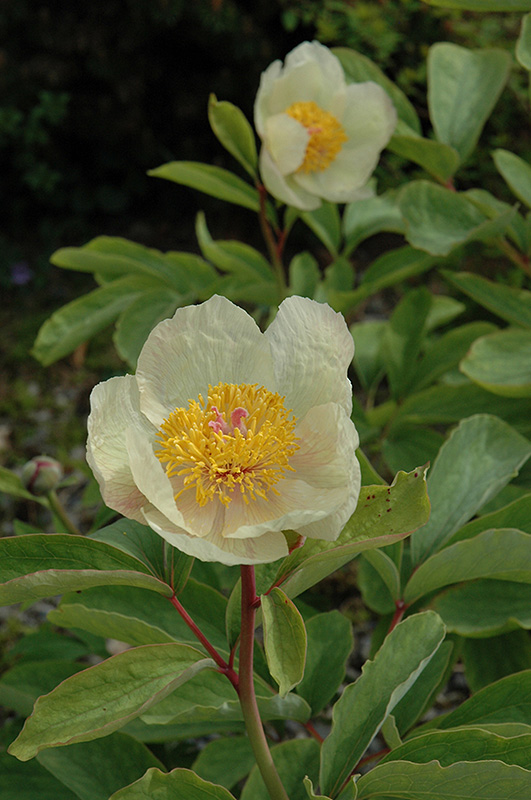Molly-the-Witch Peony Paeonia mlokosewitschii Height: 30 inches Spacing: 26 inches
Sunlight:
Hardiness Zone: 4 Other Names: Golden Peony, Caucasian Peony Description: An interesting rare variety with bold single yellow flowers that mature to butter yellow; foliage is often veined and edged in purple; great as an accent in the garden or massed in borders; Ornamental Features Molly-the-Witch Peony features bold lightly-scented yellow cup-shaped flowers with buttery yellow overtones and yellow centers at the ends of the stems from late spring to early summer. The flowers are excellent for cutting. Its compound leaves remain grayish green in color with distinctive purple veins throughout the season. Landscape Attributes Molly-the-Witch Peony is an herbaceous perennial with a more or less rounded form. Its medium texture blends into the garden, but can always be balanced by a couple of finer or coarser plants for an effective composition. This is a relatively low maintenance plant, and should be cut back in late fall in preparation for winter. It is a good choice for attracting butterflies to your yard, but is not particularly attractive to deer who tend to leave it alone in favor of tastier treats. It has no significant negative characteristics. Molly-the-Witch Peony is recommended for the following landscape applications; Planting & Growing Molly-the-Witch Peony will grow to be about 30 inches tall at maturity, with a spread of 30 inches. When grown in masses or used as a bedding plant, individual plants should be spaced approximately 26 inches apart. It grows at a slow rate, and under ideal conditions can be expected to live for approximately 20 years. As an herbaceous perennial, this plant will usually die back to the crown each winter, and will regrow from the base each spring. Be careful not to disturb the crown in late winter when it may not be readily seen! This plant does best in full sun to partial shade. It prefers to grow in average to moist conditions, and shouldn't be allowed to dry out. It is not particular as to soil pH, but grows best in rich soils. It is somewhat tolerant of urban pollution. Consider applying a thick mulch around the root zone in winter to protect it in exposed locations or colder microclimates. This species is not originally from North America.![]()
![]()
![]()
![]()
![]()
![]()
![]()
![]()
![]()
![]()
![]()
Characteristics
Applications
Ornamental Features
This guide is an online resource representing many of the varieties that we carry over the course of the season, and is intended for informational purposes only. Inventory varies seasonally, so we cannot guarantee that every plant will be in stock at all times - please contact the store directly for current availability. It does not include our entire selection of plants, so be sure to visit our store to see varieties that may not be represented on this list.


